Blog
Biodiversity in Brazil: A Megadiverse Country
- Thursday November 5th, 2020
- Posted by: Amanda Ennes
- Category: Brazil
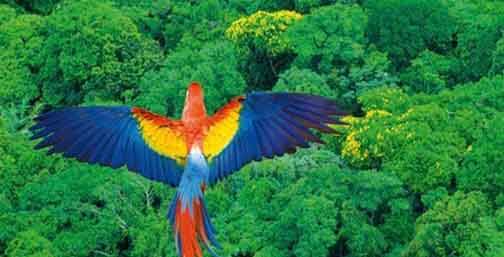
Brazil is the most biologically diverse country in the world. It ranks at the top among the 17 megadiverse countries on Earth. According to the Convention on Biological Diversity, the biodiversity in Brazil is ever-expanding, with an average of 700 new animal species discovered each year.
The variety of biomes reflects the enormous wealth of Brazilian flora and fauna. In fact, the abundant wildlife translates into more than 20% of the total number of species on the planet. And that’s not all: Brazil is also rich in socio-diversity, with over 200 indigenous tribes and another distinct group of people.
Table of Contents
ToggleMegadiverse country
Megadiverse countries are nations that harbor the majority of Earth’s species of plants and animals. Studies estimate that there are between 10 and 50 million species of fauna and flora in the world. However, scientists have only been able to classify and name around 2.16 million species thus far.
Among those species, approximately 20% are present in Brazil.
Check some amazing numbers of biodiversity in Brazil:
- Around 5,000 species of fungus
- Over 32,000 species of fruiting plants
- Around 1,300 species of fern
- Between 90,000 and 120,000 species of insects
- Over 3,500 species of fishes
- Around 1,800 species of birds
- Over 650 species of mammals
Economy and biodiversity in Brazil
The biodiversity in Brazil is also very important for the national economy. The agribusiness sector alone accounts for around 21% of the Brazilian GDP. Furthermore, several species of plants originally from Brazil have great importance on the global economy, such as the pineapple, Brazil nuts, cassava, cashew, and carnauba wax.
Moreover, a great part of the Brazilian exports also come from these kinds of products, especially coffee, soybeans, and corn.
Main biomes in Brazil
Brazil has a huge territory, with different climate and soil, which allows different environmental conditions. These factors lead to different ecosystem types.
The Amazon
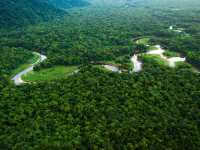 The Amazon is the largest forest formation on the planet. It occupies about 49% of the Brazilian territory. Most of the interior forest of the region is rainforest. However, this biome also contains flooded forests, lowland forests, bamboo and palm forest, savanna, sandy heath, and alpine tundra. The Amazon covers parts of the states of Acre, Amapá, Amazonas, Pará, Roraima, Rondônia, Mato Grosso, Maranhão, and Tocantins.
The Amazon is the largest forest formation on the planet. It occupies about 49% of the Brazilian territory. Most of the interior forest of the region is rainforest. However, this biome also contains flooded forests, lowland forests, bamboo and palm forest, savanna, sandy heath, and alpine tundra. The Amazon covers parts of the states of Acre, Amapá, Amazonas, Pará, Roraima, Rondônia, Mato Grosso, Maranhão, and Tocantins.
Studies believe The Amazon is home to almost 60% of all life on the planet. However, only 30% of them are known to science. Its climate is hot and humid, with temperatures ranging from 20ºC to 41ºC.
Caatinga
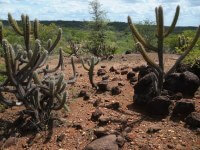 The Caatinga is located in the Northeast region of Brazil and represents 10% of the Brazilian territory. It features species of plants that have adapted to the lack of water in the region. The Caatinga is a thorn forest, which consists primarily of small, thorny trees that shed their leaves seasonally. Moreover, it has a semi-arid climate, with temperatures between 24ºC to 26ºC.
The Caatinga is located in the Northeast region of Brazil and represents 10% of the Brazilian territory. It features species of plants that have adapted to the lack of water in the region. The Caatinga is a thorn forest, which consists primarily of small, thorny trees that shed their leaves seasonally. Moreover, it has a semi-arid climate, with temperatures between 24ºC to 26ºC.
Cerrado
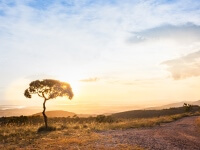
Cerrado is a savanna-like biome, characterized by the trees being widely spaced. It covers around 21% of the Brazilian territory and is located in the highlands of central Brazil. During the dry season, there is a huge possibility of wildfires in the region.
The World Wide Fund for Nature named Cerrado the biologically richest savanna in the world.
Atlantic Forest
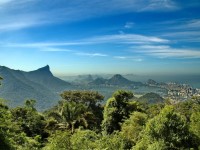 The Atlantic Forest is one of the five hotspots of most important biodiversity on Earth. It is also the largest biosphere reserve designated by UNESCO. It extends along the Atlantic coast of Brazil and is characterized by high biodiversity and endemism. In fact, the Atlantic Forest harbors around 20,000 species of plants.
The Atlantic Forest is one of the five hotspots of most important biodiversity on Earth. It is also the largest biosphere reserve designated by UNESCO. It extends along the Atlantic coast of Brazil and is characterized by high biodiversity and endemism. In fact, the Atlantic Forest harbors around 20,000 species of plants.
There are also thousands of species of birds, mammals, reptiles, and amphibians in the Atlantic Forest. Such species include endangered jaguars, golden lion tamarins, woolly spider monkeys, maned three-toed sloths, and red-tailed parrots. Among the most common plants in the Atlantic Forest are the ipê, brazilwood, jacarandá, jequitibá, and palm trees.
Unfortunately, the expansion of cities and coastal development have transformed the vast forest in the most densely populated and industrialized region of Latin America. For instance, approximately 70% of the Brazilian population lives within the Atlantic Forest.
Pantanal
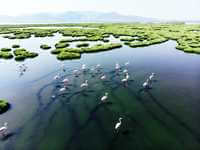 The Pantanal is the largest flooded grasslands in Brazil. For a few months of the year, certain areas may be partially or totally submerged. This ecosystem is formed by largely sandy terrains, covered by different physiognomies due to the variety of microregions and flood regimes.
The Pantanal is the largest flooded grasslands in Brazil. For a few months of the year, certain areas may be partially or totally submerged. This ecosystem is formed by largely sandy terrains, covered by different physiognomies due to the variety of microregions and flood regimes.
The Pantanal supports over 260 species of fish, 700 species of birds, and 90 species of mammals. It is also home to 160 species of reptiles, 1,000 species of butterflies, and 1,600 species of plants.
With a tropical continental climate, temperatures reach 32ºC during summer and 21ºC during the winter.
Preservation
According to the United Nations’ Convention on Biological Diversity, biodiversity also has ecological, genetic, social, economic, scientific, educational, cultural, recreational, and aesthetic values. It plays a critical role in maintaining ecosystems that are the essential foundations for sustainable development and human well-being.
Brazil has over 55% of native vegetation cover and 15% of the planet’s freshwater. Such biodiversity reinforces the importance of conservation policies and the sustainable use of biomes. Pollution, deforestation, and overexploitation are responsible for reducing the planet’s biodiversity. Therefore, we need to reflect and be aware of the need to take care of the diversity of life on Earth.
Study Portuguese at Caminhos Language Centre and experience Rio de Janeiro.


 Deutsch
Deutsch Français
Français Português
Português Español
Español
